
Overview
This article presents authoritative strategies for effective repetitive advertising aimed at enhancing brand recall. It emphasizes critical methods such as:
- Consistent messaging
- Emotional engagement
- Targeted approaches
Supported by compelling case studies, the article demonstrates significant increases in conversion rates and revenue, illustrating how well-executed repetitive advertising not only improves consumer memory but also drives brand preference. By implementing these strategies, brands can effectively capture attention, build lasting interest, and ultimately prompt consumer action.
Introduction
In a marketplace saturated with choices, the challenge of making a brand memorable has never been more critical. Effective repetitive advertising transcends mere bombardment of consumers with the same message; it involves strategically crafting experiences that resonate and linger in their minds. This article delves into ten powerful strategies that can significantly enhance brand recall, from leveraging emotional connections to ensuring consistent messaging across multiple channels.
How can brands strike the right balance between repetition and consumer fatigue? What innovative approaches can they adopt to captivate their audience?
Parah Group: Optimize Repetitive Advertising for Enhanced Brand Recall
stands at the forefront of through meticulously optimized strategies for . By deeply understanding and utilizing advanced data analysis, the agency empowers DTC companies to craft compelling that resonate with their target audiences. This not only amplifies visibility but also strengthens consumer memory, facilitating easier recall during purchasing decisions, particularly through repetitive advertising.
Furthermore, the impact of enhanced advertising on product recognition is profound; it fosters a connection that encourages consumers to remember and prefer a brand over competitors. Effective strategies for encompass:
- Consistent messaging
Specific tactics include:
- Redesigning the homepage to showcase social proof
- Offering free gifts on orders exceeding a certain cart size
The agency's proven success is exemplified by case studies revealing a 35% increase in conversion rates and a 10% growth in revenue per visitor for a $30M apparel company, underscoring the efficacy of these tactics. By implementing these strategies, companies can significantly elevate their recognition rates, ensuring they remain prominent in consumers' minds while driving revenue growth and enhancing profitability.
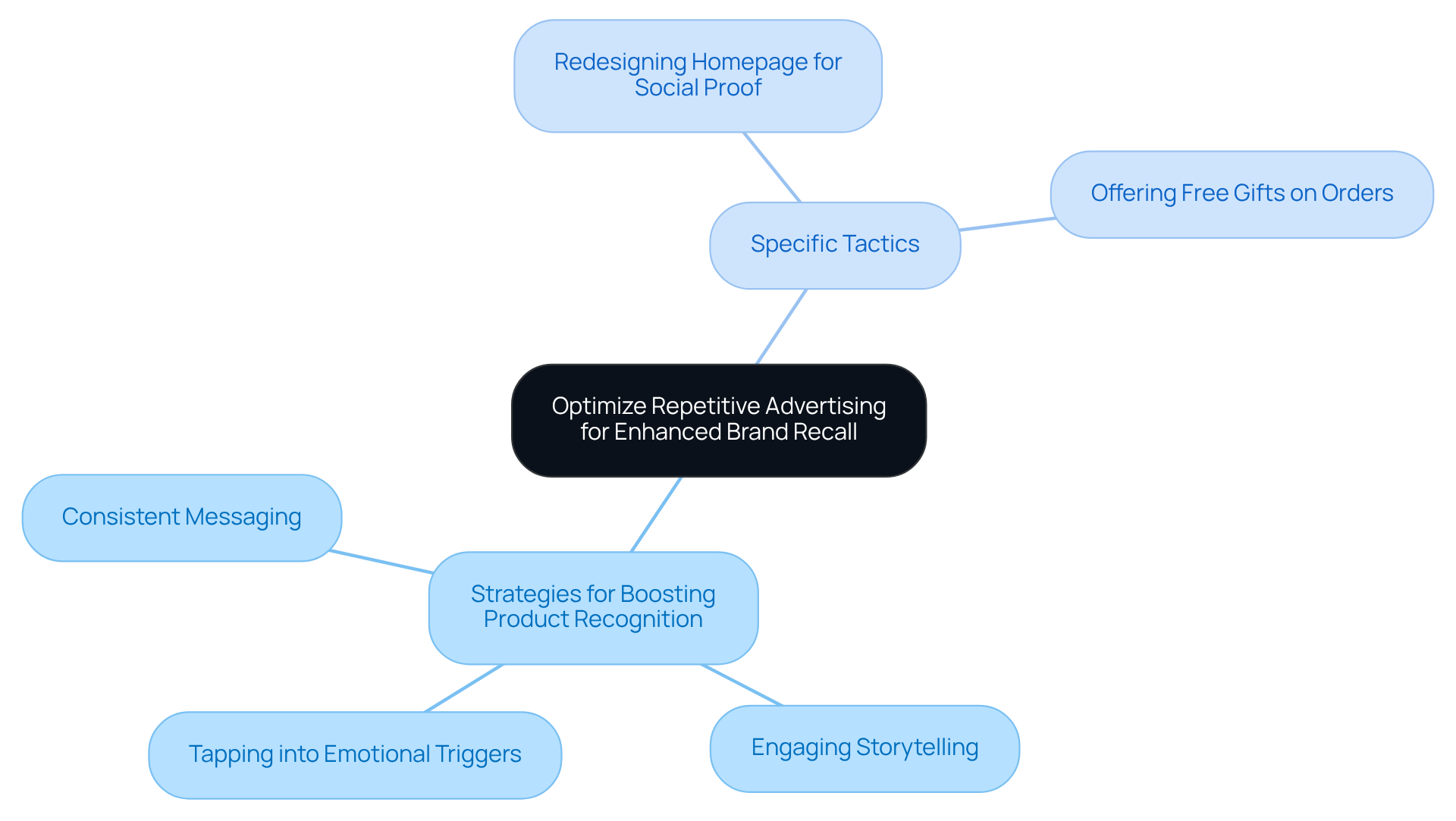
Leverage Multiple Channels to Reinforce Brand Messaging
To effectively , DTC companies must leverage a variety of advertising platforms, including social media, email marketing, and . By maintaining a , companies can solidify their identity and ensure that their audience frequently encounters the brand through repetitive advertising. This omnichannel approach not only but also fosters familiarity, which is crucial for enhancing recall in the context of repetitive advertising.
For instance, has successfully transformed DTC labels through innovative , resulting in impressive outcomes such as:
- A 35% increase in conversion rates for an apparel label
- A 10% rise in revenue per visitor for the same label
Additionally, other case studies reveal similar successes, including:
- A 90% for a cannabis company
- A 73% boost in revenue for a cleaning product company
These examples underscore the effectiveness of a unified strategy in enhancing visibility and memory through repetitive advertising. To implement a successful , DTC owners should ensure that their messaging is not only consistent but also tailored to resonate with the unique preferences of their target audience across various platforms.
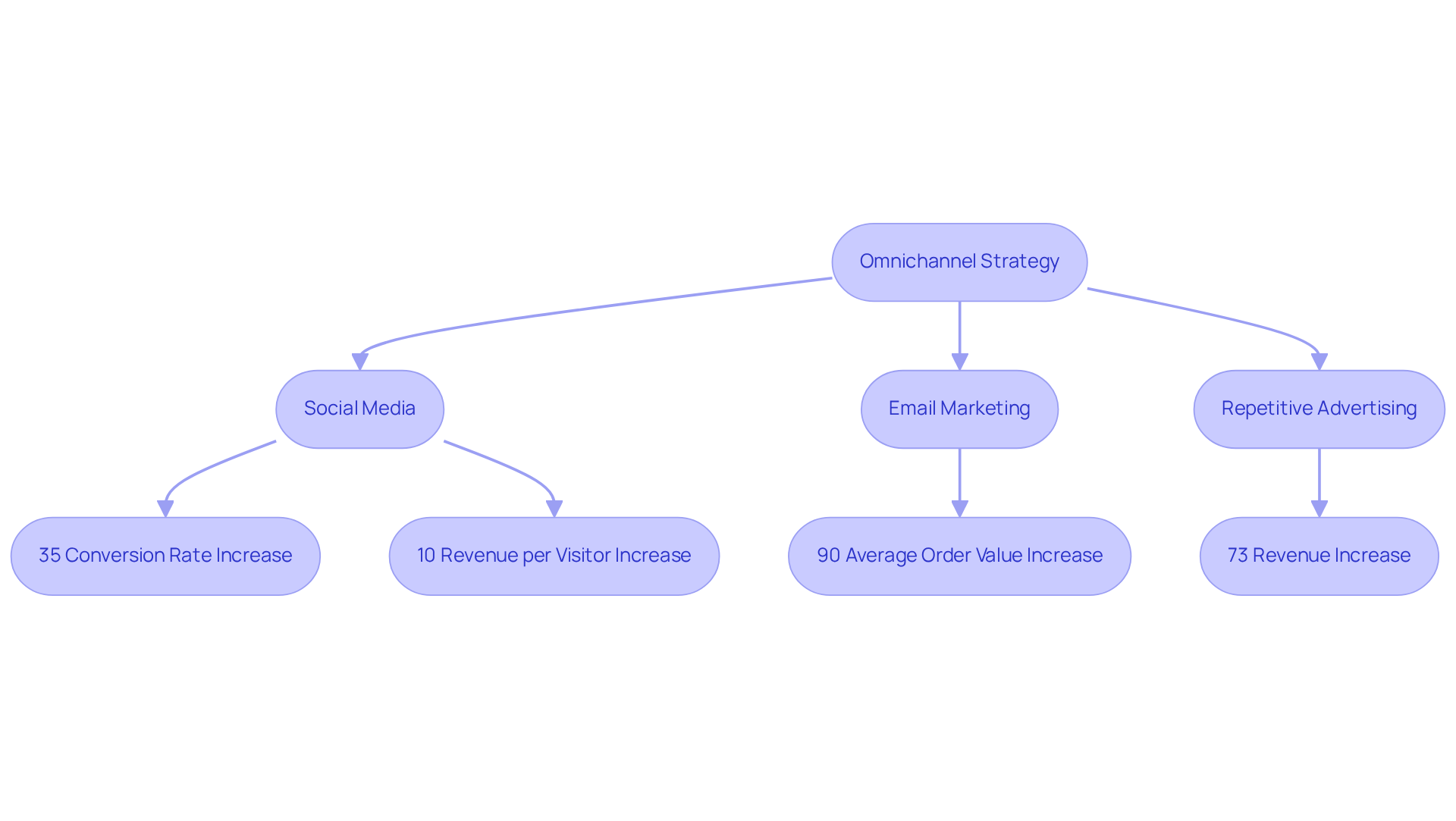
Ensure Consistent Messaging Across All Advertising Platforms
Consistency in messaging across all advertising channels is not just beneficial; it is essential for effective identity remembrance. companies must ensure that their are meticulously aligned, irrespective of the channel. This uniformity empowers consumers to forge a clear and recognizable image of the company, facilitating easier recall of the name when needed.
To achieve this, companies should develop that dictate how messaging should be articulated across various platforms. Research demonstrates that companies maintaining can witness revenue increases of up to 23%, underscoring the . Furthermore, a striking 90% of potential clients expect a , emphasizing the necessity for DTC companies to prioritize alignment.
Additionally, consistent labels are 3.5 times more noticeable in crowded markets, further reinforcing the and recognition. By adhering to established identity guidelines, companies can significantly bolster their recognition effectiveness, ensuring that their messaging resonates with consumers and fosters .
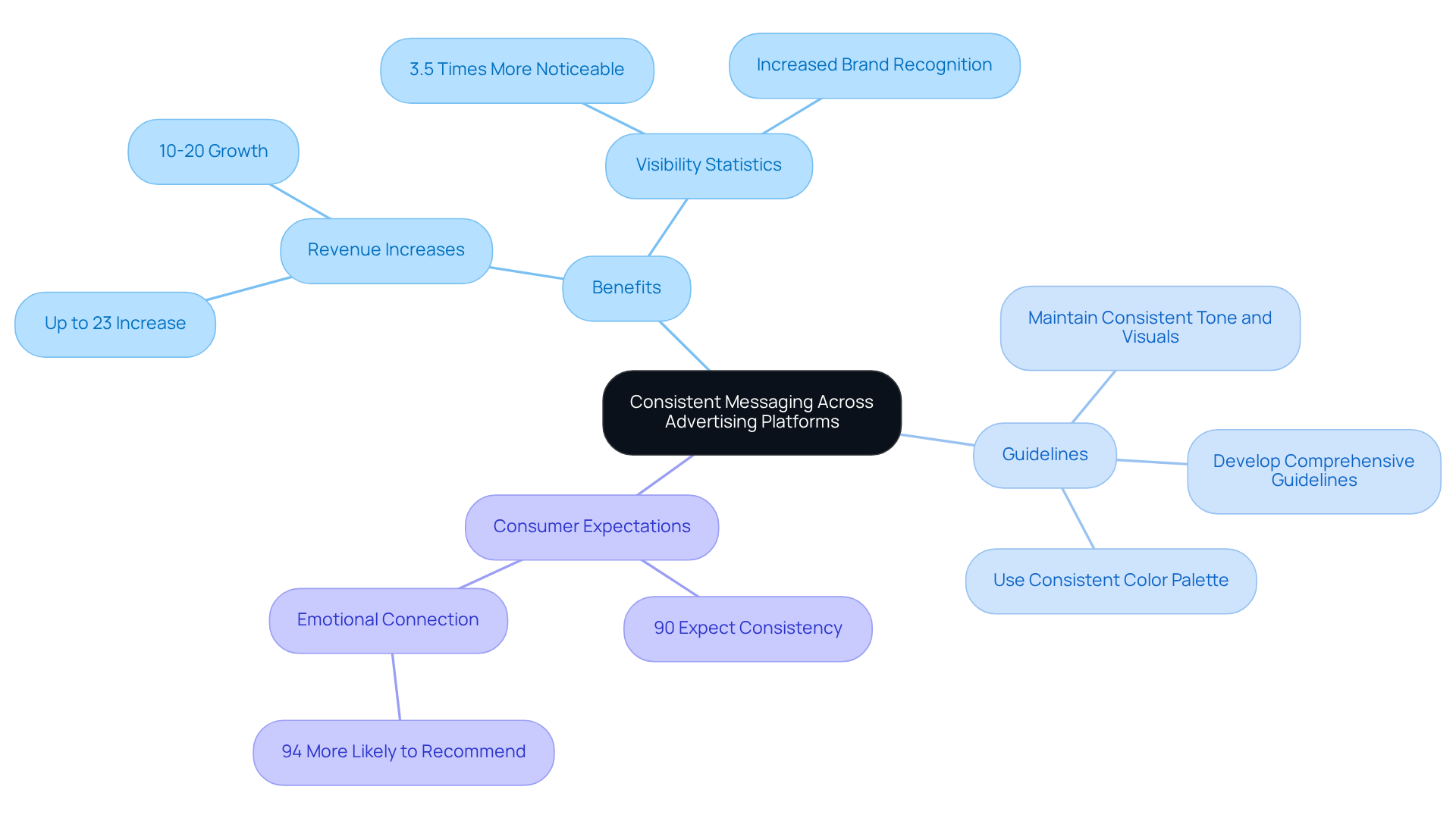
Balance Ad Frequency to Avoid Consumer Fatigue
Repetition is crucial for name recognition; however, balancing is vital to prevent consumer fatigue. Brands must closely monitor to ascertain the ideal frequency for their ads. Implementing with various frequencies can pinpoint the optimal exposure level where consumers remain engaged without feeling overwhelmed.
Research reveals that:
- 60% of streaming viewers form a negative impression after encountering .
- 50% of viewers opt not to purchase a product after excessive exposure to such ads.
This underscores the necessity for a . By achieving this balance, companies can enhance recall while fostering a positive . As marketing analysts assert, "Optimal ad frequency is about ensuring your message resonates without becoming a nuisance.
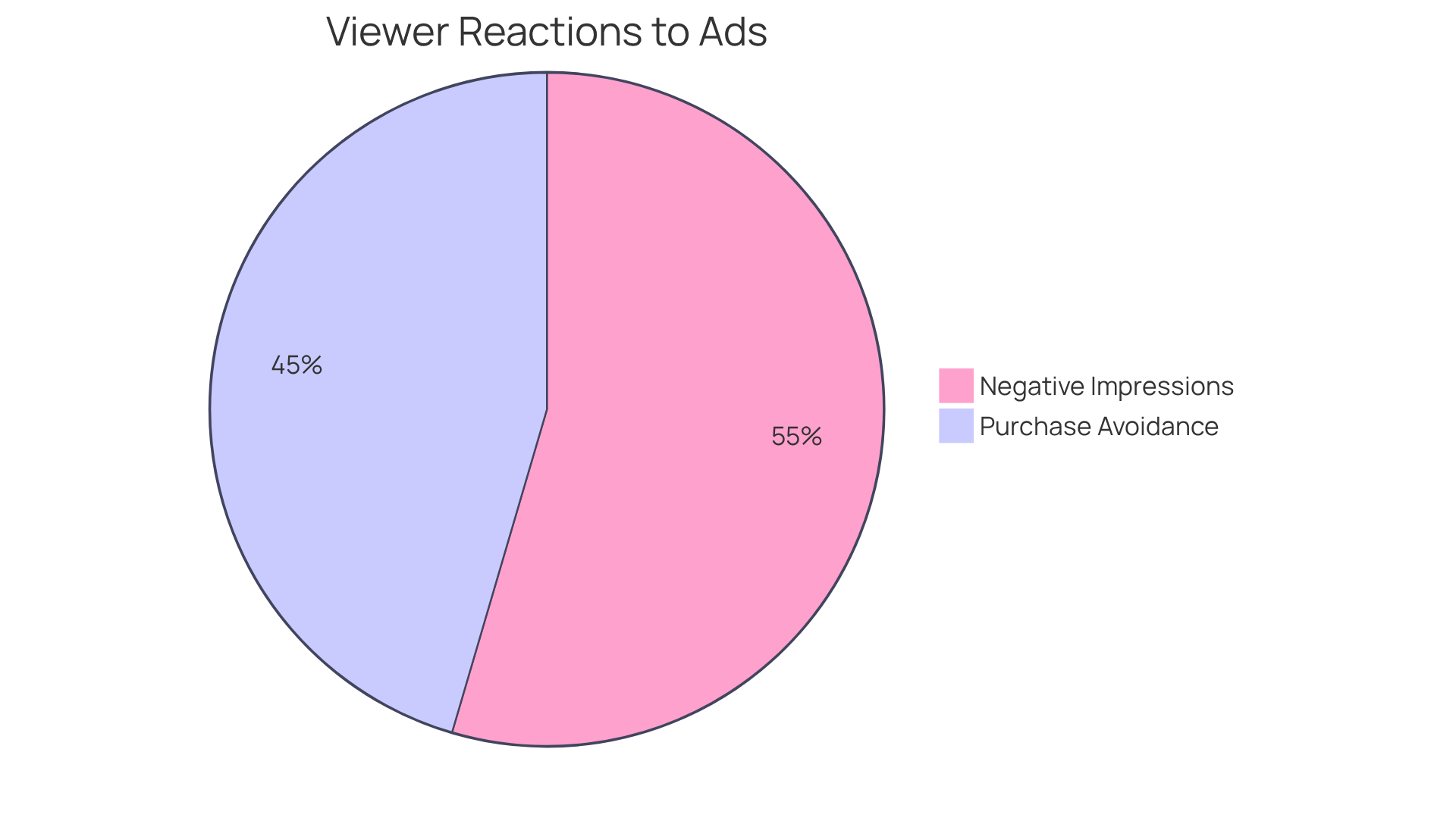
Adopt a Targeted Approach for Effective Audience Engagement
Adopting a targeted approach in advertising is crucial for . Direct-to-consumer (DTC) companies must leverage data analytics to categorize their customers based on demographics, interests, and behaviors. By customizing messages for specific groups, companies can create more pertinent and influential advertisements that resonate with consumers, thus enhancing brand recognition.
Research indicates that can lead to a 20% increase in engagement rates, as highlighted in the 2025 State of Retail Media Report by Skai. As one data analyst asserts, 'Understanding your audience through data is the key to creating .' This strategy not only enhances product recall but also , making it essential for DTC companies pursuing .
For instance, 's partnership with a $30M clothing line resulted in a remarkable 35% increase in conversion rates through improved messaging and strategic homepage redesigns that emphasized social proof. Furthermore, as (CAC) continue to rise, posing challenges for many DTC companies, can alleviate these issues by ensuring that marketing efforts are both efficient and impactful.
Maintaining a DTC channel is also vital for gathering customer data and refining narratives, further bolstering engagement.
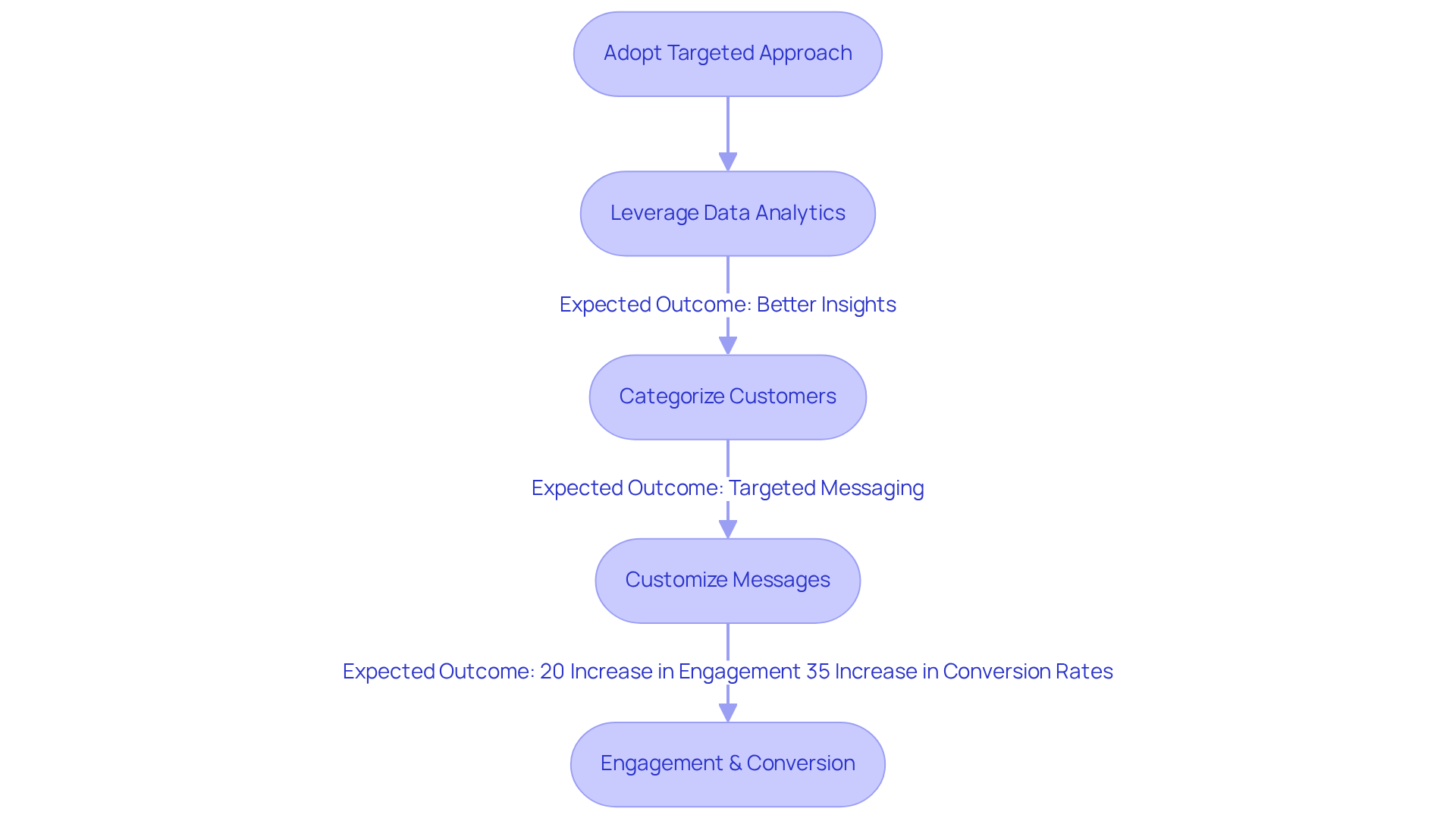
Elicit Emotional Responses to Strengthen Brand Recall
To enhance , must prioritize evoking through their advertising. Ads that elicit humor, nostalgia, or empathy are significantly more memorable, as they connect with consumers on a deeper emotional level. Brands can achieve this impact by crafting that resonate with their audience's experiences and values. This approach not only creates a but also significantly enhances recall, ultimately driving and loyalty.
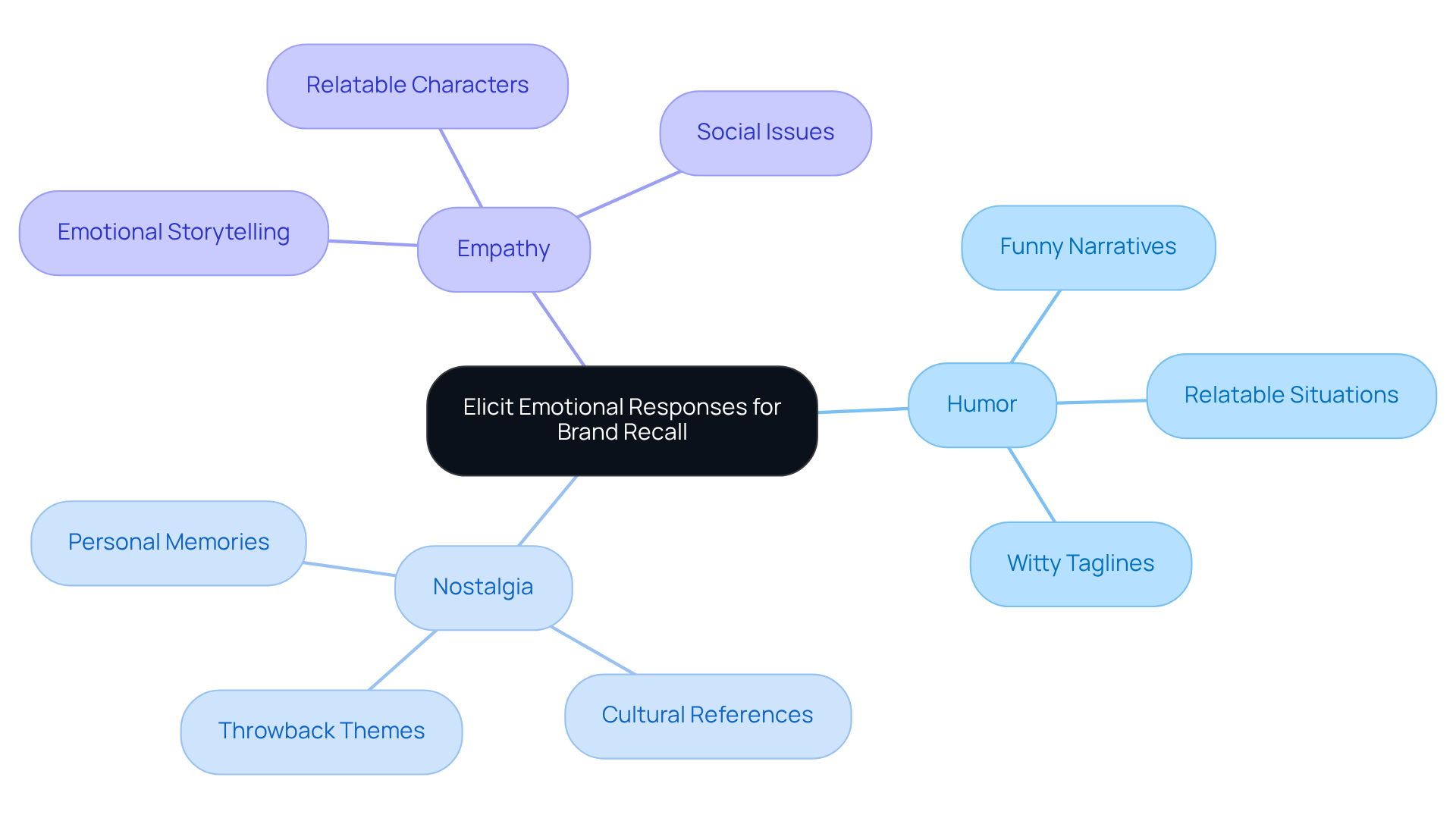
Analyze Successful Campaigns: Coca-Cola and Nike as Case Studies
Examining effective advertising campaigns from industry leaders like Coca-Cola and Nike reveals invaluable insights for DTC companies. exemplifies how personalization can enhance consumer engagement, while has become a hallmark of motivation and empowerment. Both campaigns utilized along with emotional involvement, significantly improving product recall. DTC companies can draw lessons from these successful examples by adopting similar strategies that resonate with their target audience.
For instance, 's collaboration on a $30M clothing line illustrates this approach; they redesigned the homepage to highlight social proof and , resulting in a remarkable 35% increase in . Additionally, incorporating gamified elements and offering free gifts for orders over a certain amount can create a more , as evidenced by their case studies.
By implementing these proven strategies, DTC companies can effectively drive revenue growth and enhance profitability, while minimizing the impact of repetitive advertising and thereby fostering greater customer loyalty.
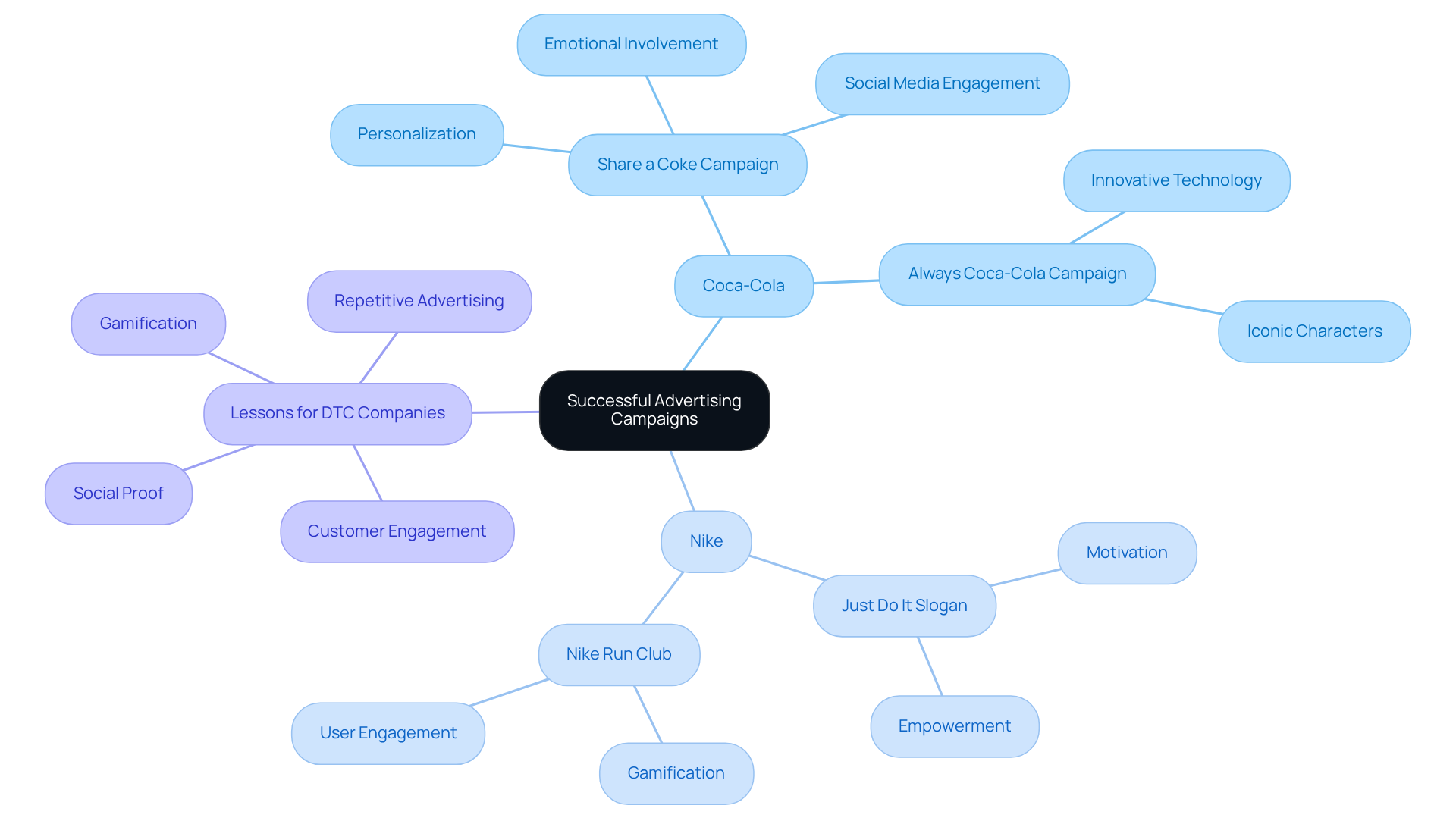
Address Challenges: Combat the Wear-Out Effect in Advertising
Combatting the wear-out effect in advertising is crucial for in the face of over time. companies must regularly update their ad creatives to prevent repetitive advertising while ensuring the . This strategy can encompass changes in:
- Visuals
- Copy
- Format of the ads
By introducing new elements while preserving consistency, companies can and . Ultimately, this approach not only fosters engagement but also , reinforcing the in a competitive market.
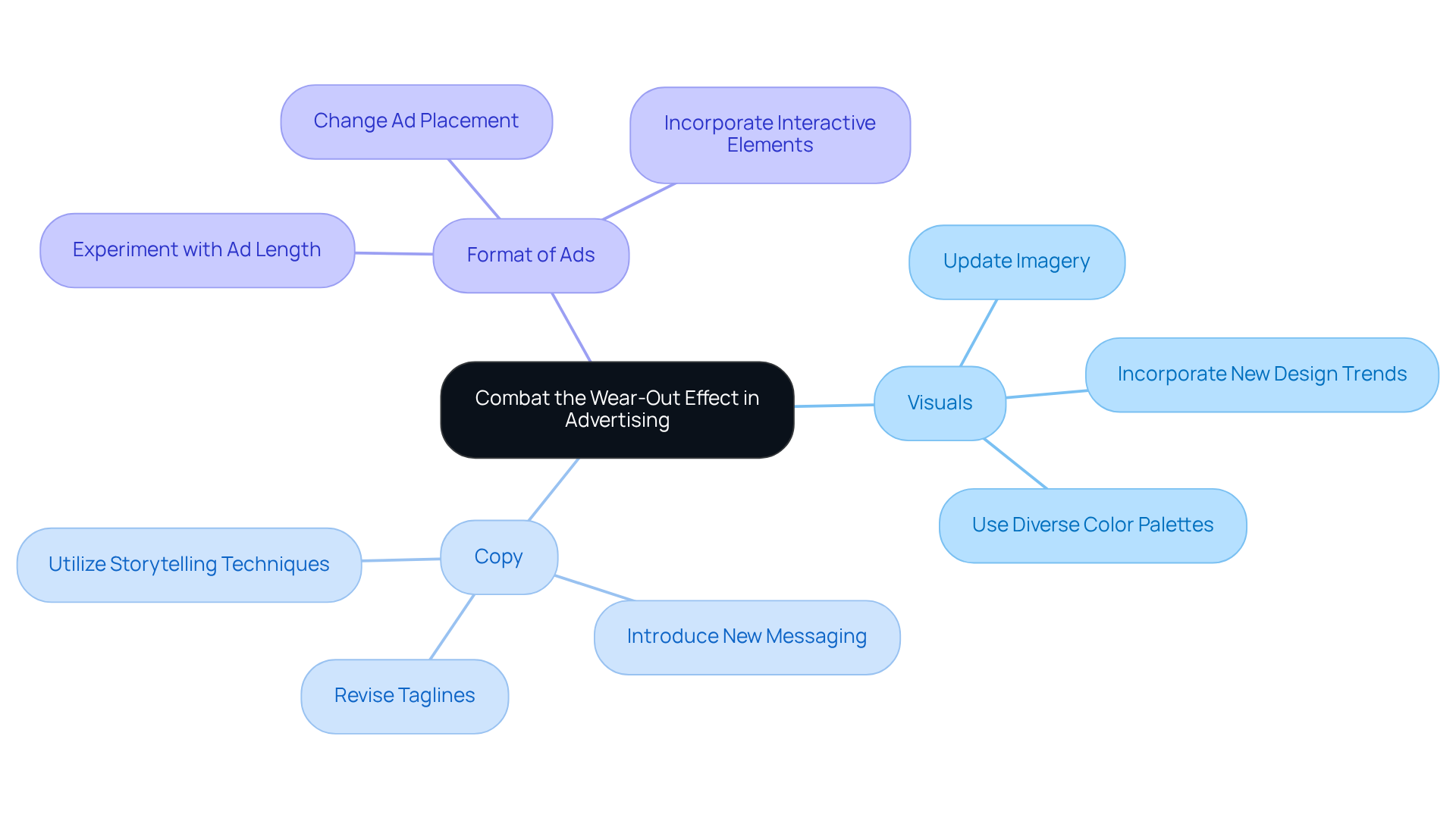
Integrate Repetition with Digital Marketing for Greater Impact
Incorporating into is crucial for enhancing among consumers. must leverage:
- Retargeting ads
- Email marketing
- Social media campaigns
to reinforce their messaging effectively. For example, a $30 million apparel company achieved a remarkable 35% increase in through and gamified elements that encouraged repeat visits. By positioning ads strategically in front of consumers who have previously engaged with the brand, organizations can effectively remind them of their offerings, thereby promoting conversions.
Similarly, Grab Green, a $15 million cleaning product company, implemented free shipping thresholds and introduced bundles to incentivize larger purchases, resulting in an impressive 80% increase in . This approach not only enhances memory retention but also to the company's website. STRNG Seeds exemplifies this success, having experienced a 90% rise in average order value through .
By employing these proven tactics, DTC companies can significantly boost their profitability and foster . The data clearly illustrates that strategic marketing efforts centered around repetitive advertising can yield substantial dividends in the competitive landscape of digital marketing.
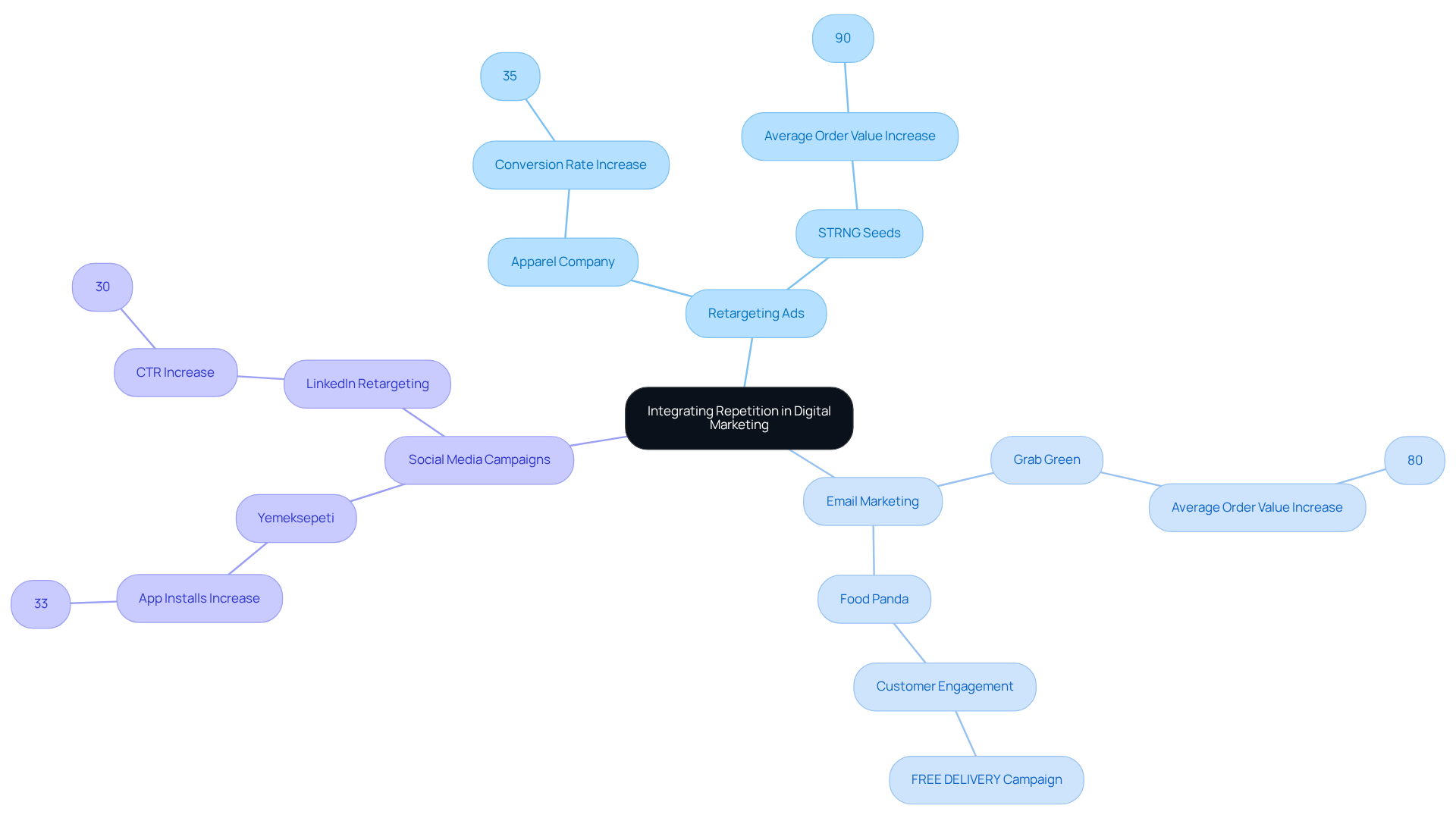
Customize Repetitive Advertising for Diverse Audience Segments
It is crucial for enhancing engagement and recall to tailor repetitive advertising for various demographic segments. Direct-to-consumer (DTC) companies must utilize audience information to pinpoint unique segments, thereby enabling customized messaging that resonates with each group.
For instance, effectively assisted a $30 million apparel company by redesigning their homepage to emphasize social proof and reviews, which by 35%. This case illustrates the power of .
Similarly, companies such as Sephora leverage AI-driven chatbots to offer personalized beauty suggestions, underscoring the impact of individualized messaging. Christina Inge asserts the , stating, "Your job will not be taken by AI. It will be taken by a person who knows how to use AI."
By ensuring that each segment receives relevant and personalized communications, companies can substantially enhance their advertising effectiveness and minimize the impact of repetitive advertising while strengthening overall recall. Research indicates that , with studies revealing that personalized messages can increase engagement by up to 50%.
Therefore, investing in and is not just advantageous but essential for aiming to thrive in a competitive market. DTC brands should consider adopting and improve messaging effectiveness, as evidenced by the successful outcomes achieved by Parah Group's clients.
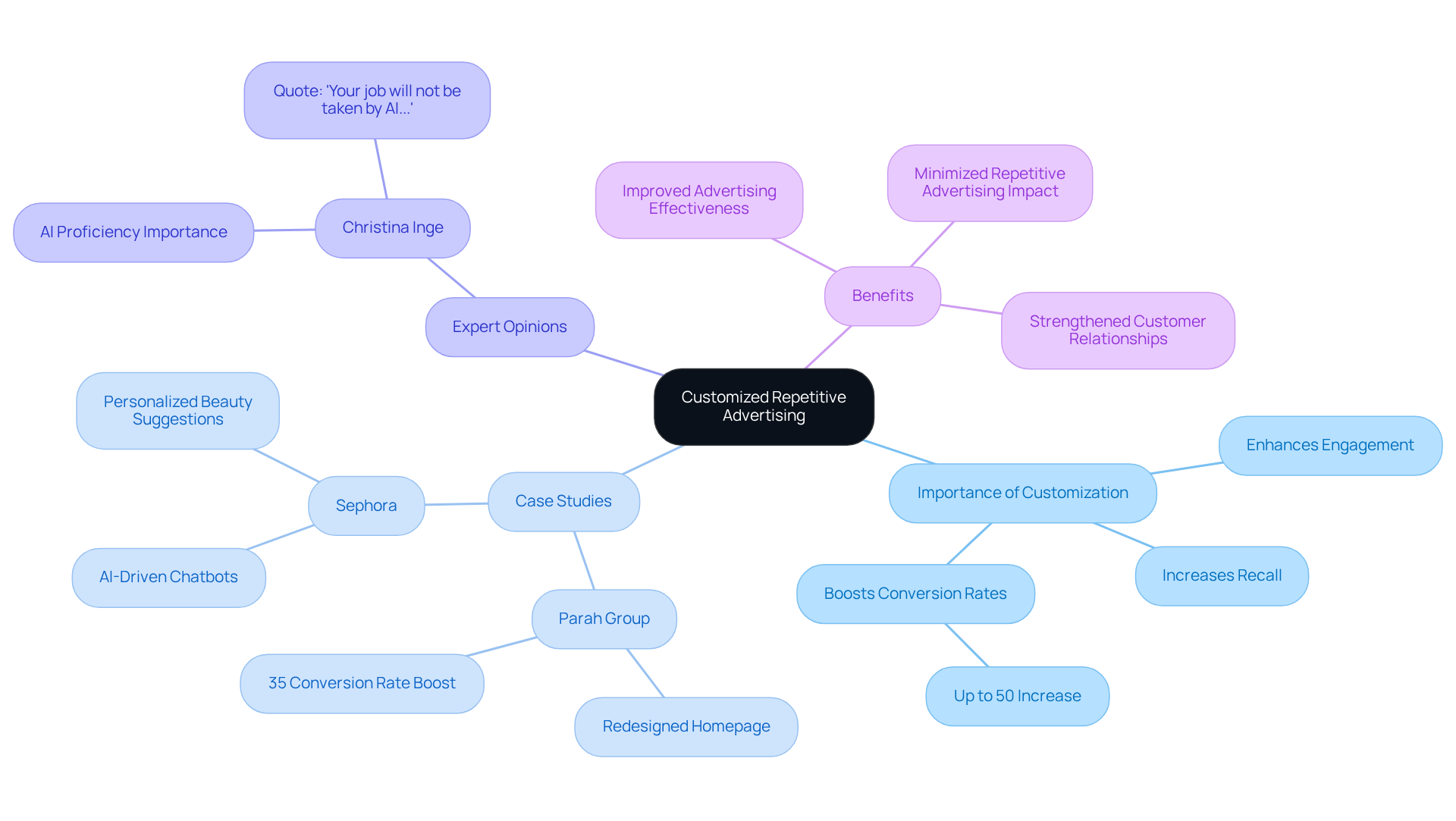
Conclusion
Repetitive advertising stands as a formidable strategy for amplifying brand recall, empowering direct-to-consumer (DTC) companies to secure a lasting imprint in the minds of their target audiences. By implementing well-structured strategies—including consistent messaging, emotional engagement, and targeted approaches—brands can optimize their advertising efforts not just to capture attention but to cultivate enduring connections with consumers. The insights articulated throughout this article underscore the critical need to weave these strategies into a cohesive advertising plan.
Key arguments underscore the necessity of leveraging multiple channels, ensuring consistency across platforms, and balancing advertising frequency to mitigate consumer fatigue. Successful case studies from industry leaders such as Coca-Cola and Nike illustrate the tangible advantages of personalized and emotionally resonant campaigns. Furthermore, the significance of audience segmentation and targeted messaging is paramount, as these tactics dramatically enhance engagement and conversion rates.
Ultimately, the importance of executing effective repetitive advertising strategies cannot be underestimated. As the competitive landscape continues to shift, DTC companies must prioritize these techniques to enhance brand recall, increase revenue, and foster customer loyalty. By investing in tailored advertising approaches and persistently analyzing campaign performance, brands can strategically position themselves for sustained success in an ever-evolving market.
Frequently Asked Questions
What is the main focus of Parah Group's advertising strategies?
Parah Group focuses on enhancing product memory through optimized strategies for repetitive advertising, utilizing consumer behavior insights and advanced data analysis to create compelling campaigns.
How does repetitive advertising impact brand recall?
Repetitive advertising amplifies visibility and strengthens consumer memory, making it easier for consumers to recall a brand during purchasing decisions.
What are some effective strategies for boosting product recognition?
Effective strategies include consistent messaging, engaging storytelling, and tapping into emotional triggers.
Can you provide examples of specific tactics used to enhance brand recognition?
Specific tactics include redesigning the homepage to showcase social proof and offering free gifts on orders exceeding a certain cart size.
What results have been achieved through Parah Group's strategies?
Case studies show a 35% increase in conversion rates and a 10% growth in revenue per visitor for a $30M apparel company, demonstrating the effectiveness of these tactics.
Why is it important for DTC companies to leverage multiple advertising channels?
Leveraging multiple channels reinforces brand messaging and ensures that audiences frequently encounter the brand, which is crucial for enhancing recall through repetitive advertising.
What are some successful outcomes from using omnichannel strategies?
Successful outcomes include a 90% increase in average order value for a cannabis company and a 73% boost in revenue for a cleaning product company.
How can DTC companies ensure consistent messaging across platforms?
Companies should develop comprehensive guidelines for messaging that align core messages, tone, and visuals across all advertising channels.
What financial benefits can consistent messaging bring to companies?
Companies with consistent marketing across platforms can see revenue increases of up to 23%, highlighting the financial advantages of a unified identity.
How does consistency in branding affect visibility in crowded markets?
Consistent labels are 3.5 times more noticeable in crowded markets, emphasizing the importance of consistency for enhancing visibility and recognition.
FAQs











